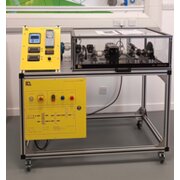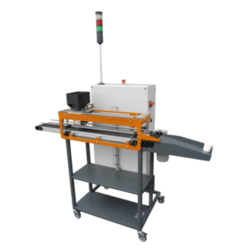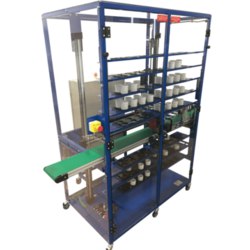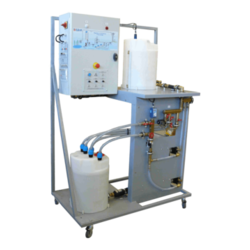Basic Unit of Mechanical Drive Systems (MDSU)
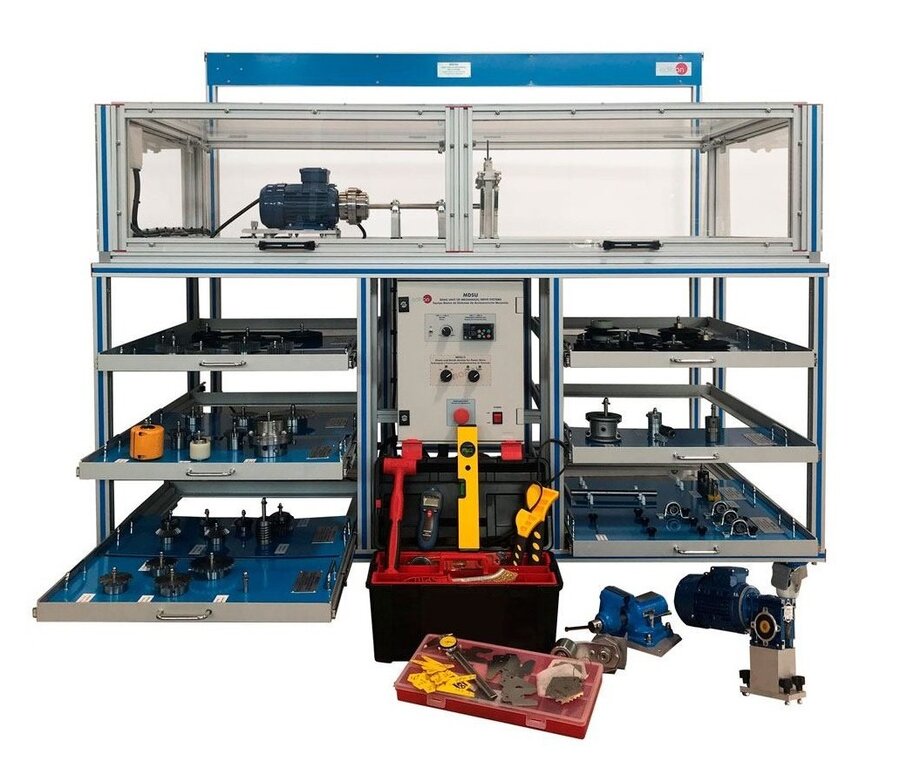


PL-484853
The Basic Unit of Mechanical Drive Systems, “MDSU,” by EDIBON, is a versatile training unit composed of a main frame that accommodates a range of accessories and components, organized into modules of various levels. This modular setup introduces users to fundamental concepts in mechanical systems and components. The main frame is designed for simultaneous use by multiple groups, with components mounted via quick-release fittings for easy assembly according to the desired study configuration. In addition to the frame, a variable-speed rotary motor initiates movement along a central shaft, driving various mechanical elements such as belts, gears, and chains.
A brake mechanism is included, enabling users to measure the torque generated by the motor or through the student-designed mechanical system, using fundamental components found in any mechanical setup. The unit also provides hands-on experience with essential maintenance techniques, including the tools and materials used for upkeep.
Safety features are fully integrated, including mechanical and electrical protections, disconnect switches, and an emergency stop button, ensuring safe operation.
- EG5C. Unit:
- Anodized aluminum frame and panels made of painted steel.
- The unit includes wheels to facilitate its mobility.
- Variable speed electric motor.
- Constant speed engine.
- Prony brake.
- Set couplings and shafts.
- Set pillow block bearings.
- Set of belt drives.
- Set of chain drives.
- Gear drives set.
- Measurement devices.
- Mounting and fixing parts.
- Tool box.
- Control panel.
- All components to be industrial grade.
- The unit includes a mounting guide and tools.
- Cables and Accessories, for normal operation.
- Manuals: This unit is supplied with 8 manuals. Required services, Assembly and Installation, Interface and Control software, Starting-up, Safety, Maintenance, Calibration and Practices manuals.
EXERCISES AND PRACTICAL POSSIBILITIES TO BE DONE WITH THE MAIN ITEMS
- - Introduction to the mechanical training system.
- Study of safety procedure.
- Handling of tools and adjusting screws.
- Speed and torque measurements.
- Efficiency study.
- Introduction to shafts and pillow block bearings.
- Techniques shaft alignment and flexible couplings.
- Techniques shaft alignment and rigid couplings.
- Motor soft foot study and correction.
- Introduction to belt drives.
- Introduction to the sheave and belt installation.
- Sheave alignment.
- Belt tensioning operation.
- Sheave and belt maintenance.
- Introduction to chain drives study.
- Introduction of the sprocket installation.
- Sprocket alignment study.
- Chain installation procedure.
- Chain tensioning procedure.
- Sprocket and chain maintenance.
- Introduction to gear drives.
- Spur gear installation study.
- Gear alignment.
- Backlash adjustment.
- Gears using split taper bushings mounting.
- Gear trains.
- Bearings and chains lubrication study.
- Viscosity measurement.
What is this?
These percentage scores are an average of 0 user reviews. To get more into detail, see each review and comments as per below
If you have used this product, support the community by submitting your review




